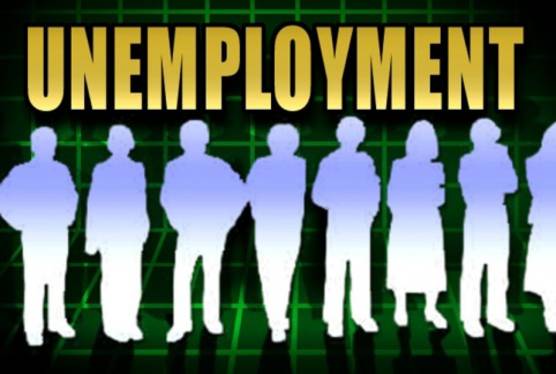By Amanda Pampuro
(CN) — Millions are filing initial claims for unemployment insurance each week, but insured U.S. unemployment rate has fallen 2.6%, the Department of Labor reported Thursday. It’s the first decrease of the pandemic era.
Amid the spread of Covid-19, 14.5% of Americans eligible for unemployment benefits are receiving them — about 21 million laid-off workers.
The Department of Labor used covered employment of 145,671,710 in its calculation, defining that term as Americans who are “unemployed through no fault of their own,” while also meeting certain work and wage requirements.
On average, over the last month, 2.6 million people applied for benefits each week. A total of 40.7 million Americans applied for benefits since March, although only a portion were enrolled and continue to receive benefits. During the week of May 9, the federal government reported 30.9 million people filed claims for extended benefits, compared with 1.5 million people claiming extended benefits at the same time in 2019.
Washington state reported the highest rate of insured unemployment in that nation at 31% with Nevada, Florida, Hawaii and Michigan hovering around 25%.
After reporting a decrease in claims in previous weeks, California reported the highest number of new claims last week at 31,764, followed by Washington and New York. Georgia, New Jersey and Kentucky reported decreases in initial claims.
While the U.S. experiences the highest rate of Covid-19 infection in the world, it is not alone in the unemployment crisis. According to a May 27 report from the International Labour Organization, 94% of the global workforce lives in a country with workplace restrictions. One in five workers live in countries where all but essential workplaces shut down.
In this environment, many states opted to reopen businesses, but unemployment rates measure only a portion of the country’s overall economic health.
“Reopening businesses is not going to fix is the health crisis,” said Jeffrey Zax, an economics professor at the University of Colorado Boulder.
“There’s a calculation being made here, which is that opening is going to cause some people to get sick and some people to die, and we’re hoping that those additional numbers are small enough that the other benefits of opening the economy are going to outweigh them. It’s a risky calculation.”
While many early cost-benefit analyses calculated that social distancing benefited both economic wellbeing and public health, it is harder to track the continued savings of social distancing. With a statistical life valued between $6 and $10 million, 100,000 Covid-19 deaths cost the country more than $600 billion.
One analysis from Johns Hopkins estimates that enacting stay-at-home orders earlier could have saved 36,000 lives, which roughly translates to $216 billion.
Moving forward Zax said it is important to note the savings attributed to social distancing as well as the costs.
“Our traditional measure of the healthy economy, which is GDP and its related measurements, that’s an imperfect guide,” Zax said. “There are a lot of things it doesn’t value, and one of them is health.”
Two things can stabilize jobs amid the spread of the virus: testing and tracking, as recommended by the World Health Organization.
Roughly 2% of the U.S. population received an affirmative diagnosis of Covid-19 by a medical professional, but a May 26 Pew Research poll estimates 1 in 5 adults know someone who was hospitalized or died from a severe case. Since infected individuals can carry and spread SARS-Cov-2 for several days before symptoms arise, taking temperatures to measure illness may do too little too late.
According to Morning Consult’s May 27 report, 75% of Americans want workers to be tested for the disease before returning to work, although 20% more Democrats advocate for mandatory testing compared to Republicans.
Alongside these job losses, the Economic Policy Institute calculates at least 16.2 million people lost employer-provided health insurance along with their jobs. Additionally, the unprecedented length of joblessness throws a wrench in momentum made by workers and their unions for better wages.
“I’m lucky enough to have seen some really great gains for the workforce out of Walt Disney World, including raised living wages,” said Paul Cox, president of IATSE Local 631, a union of Florida Disney workers.
Over the last decade, Cox said he helped negotiate better wages and watched employees move from their cars into their first homes and apartments. Although Disney World in Orlando is aiming for a July reopening, many of the company’s 42,000 furloughed workers fell through the cracks between their last paycheck and Florida’s notoriously laborious unemployment system.
The Sunshine State has confirmed 50,000 cases of Covid-19 and attributed the disease to 2,233 deaths. Amid a 25% unemployment rate, Florida reopened restaurants, bars and gyms. On average, the state confirmed 737 new cases each day over the last week.
As an entertainment technician at the ESPN Sports Center, Cox described his work as the “thing that I fell in love with when I was 11 years old.”
“Legitimately I love my craft,” Cox continued. “I love doing what I do for a profession.”
He said he hopes to be back at work as soon as it is safe to be there.
The report from the Department of Labor can be viewed below:
[Open .pdf in new window]
The May 27 report from the International Labour Organization can be viewed below:
[Open .pdf in new window]
Like this:
Like Loading...
Related





 Tweet This
Tweet This Facebook
Facebook Digg This
Digg This Bookmark
Bookmark Stumble
Stumble RSS
RSS


























REAL NAMES ONLY: All posters must use their real individual or business name. This applies equally to Twitter account holders who use a nickname.
0 Comments
You can be the first one to leave a comment.